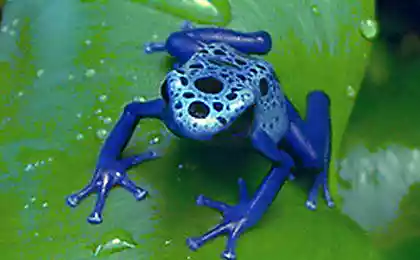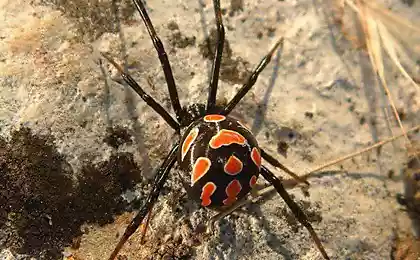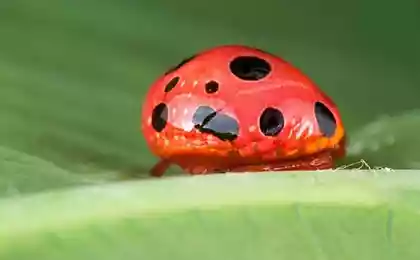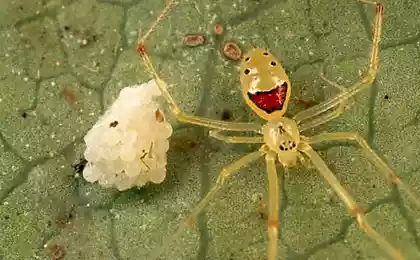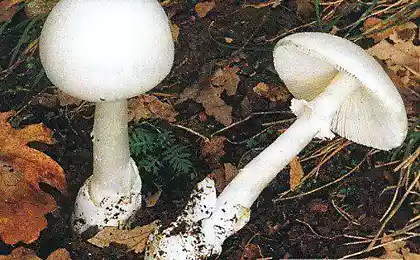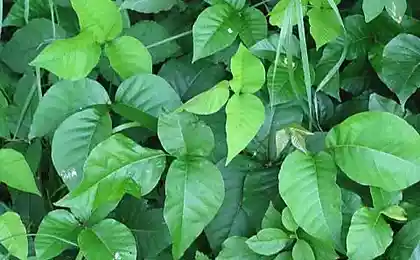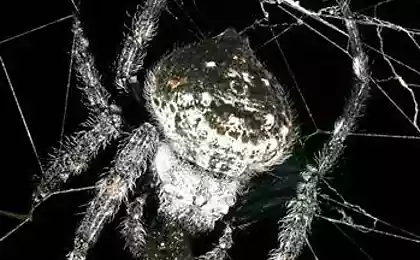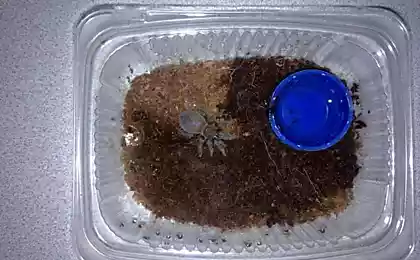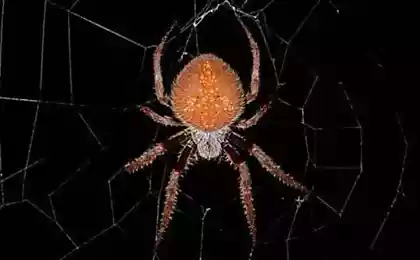995
The most poisonous spider in the world
Brazilian wandering spider has been recognized as the most venomous spider in the world by the Guinness Book of Records. His nickname he received because of its eternal journey and non-woven web in favor of the endless search for food.

Wandering spider never lived in one place and always haunting. It is unpleasant for the person that sometimes comes in the house. In South America, often find these spiders in clothing or in boxes with clothes and food.
Wandering spider is found only in America, and even then mostly in tropical and subtropical regions. To Brazilian wandering spiders include two types - a jumping spider, which pursue their prey abrupt jumps and runs spiders. The last run very fast, but are nocturnal, and during the day - sitting under rocks or hidden in some other place, including in people's homes.


Brazilian wandering spider likes to feast on bananas, do not miss the opportunity to get into the box with this fruit. For his fondness this spider got another name - the banana spider. But the main food for him after all are not the fruit. He hunts mostly on other spiders and insects, and also happens that attacks the birds and lizards that exceed its size.
He himself was rather medium-sized predator - only some 10 cm. But the small size does not prevent to be to him a great hunter and a serious problem for the people, and all of what he is capable of when they bite to allocate a substantial dose of a toxic poison that is formed at the ends of chelicerae in the channels of the poisonous glands.
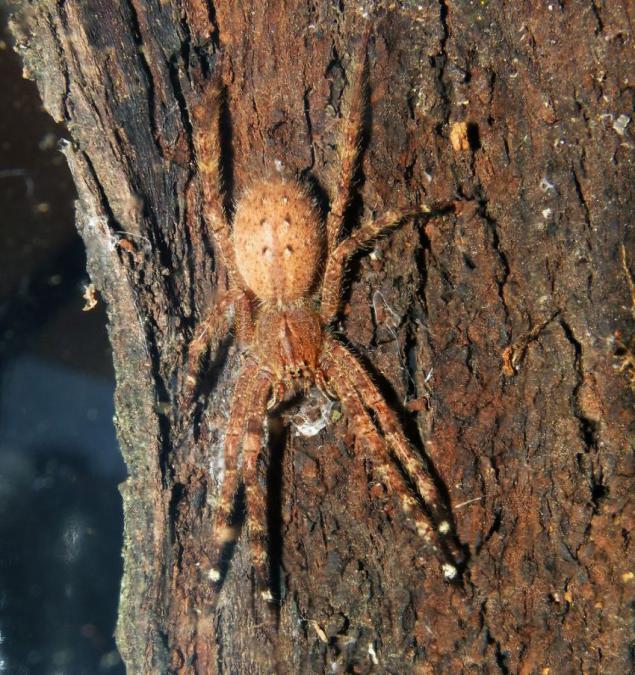
Maybe wandering spider venom is less dangerous than the venom of snakes. Adult healthy person, he is unlikely to kill - only cause a severe allergic reaction, with which modern medicine is able to quickly deal. But if the Brazilian wandering spider bite a sick person or a small child, the poison can act faster than an ambulance arrives. Some instances of this spider is so dangerous that a person's death can occur within 20-30 minutes, if you do not provide immediate relief.
Luckily for the residents of Russia, wandering spiders are not live and are unlikely ever to appear: the climate is not very suitable. But still have to remember to be careful handling of these arthropods, suddenly still have to meet with them.
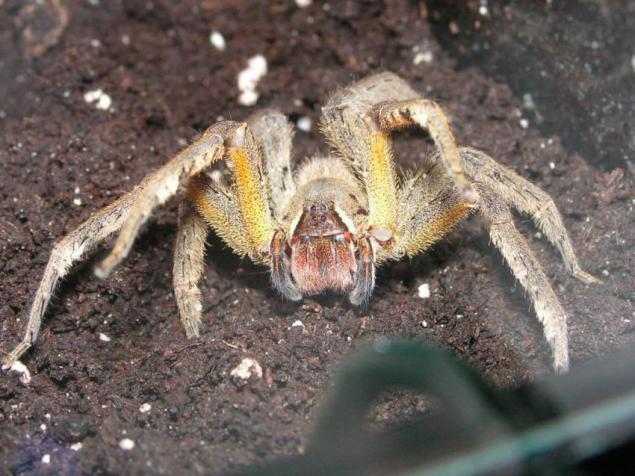
In itself, wandering spider does not attack people. It bites only in self-defense. But the problem is that these spiders like to hide and very difficult to see. If found wandering spider, try as quickly as possible to make it out of the house and see all the boxes and cabinets: whether they still single. If possible, we should be as careful and in any case not to take the spider arms.

His rank as the most dangerous spider in the world. However, a group of Brazilian scientists found that the venom of this spider is effective in treating erectile dysfunction. Scientists who discovered the properties of deadly poison, conducted experiments on rats, and the test results published in the journal titled Sexual Medicine. The report provides information that the spider toxin injected into the experimental animal PnTx2-6 twenty minutes longer lasting erections caused due to release in the animal body of nitric oxide, which is a substance that dilates blood vessels and improves blood flow.
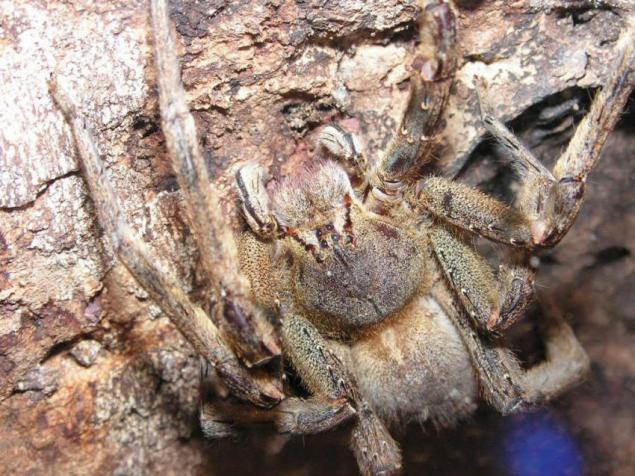
Habitat: tropical and subtropical regions of South America.
Type: Earth, also lives in the trees.
Food: young spiders eat fruit flies, small crickets. Adults eat crickets and other large insects and small lizards and mice.
Size: 10-12, 5 cm.
Growth rate: fast.
Temperature: 23, 8-26, 6'C.
Humidity: 80%.
Character: active and excited.
Lodging: young spiders can live in a transparent plastic container with holes for fresh air. Adult individuals need terrarium 17-35 liters in volume. The area of the bottom of the cage is more important than height.
The substrate: 5-8 cm sphagnum or potting soil.
Registration: live plants, tree bark, fins and so on. All that creates good hiding places.
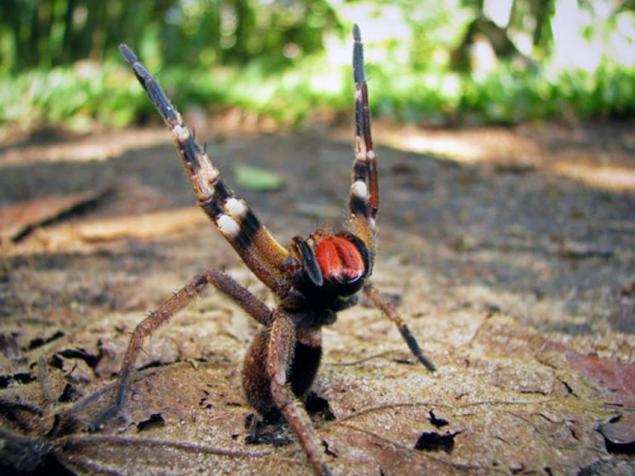

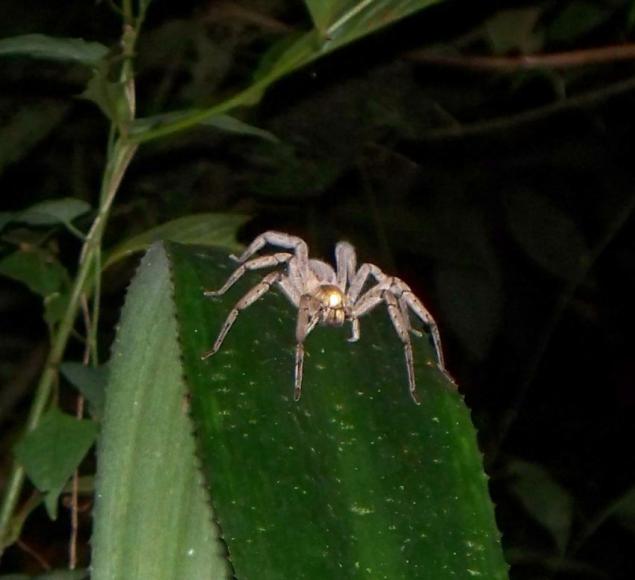
--img11--
Source: masterok.livejournal.com

Wandering spider never lived in one place and always haunting. It is unpleasant for the person that sometimes comes in the house. In South America, often find these spiders in clothing or in boxes with clothes and food.
Wandering spider is found only in America, and even then mostly in tropical and subtropical regions. To Brazilian wandering spiders include two types - a jumping spider, which pursue their prey abrupt jumps and runs spiders. The last run very fast, but are nocturnal, and during the day - sitting under rocks or hidden in some other place, including in people's homes.


Brazilian wandering spider likes to feast on bananas, do not miss the opportunity to get into the box with this fruit. For his fondness this spider got another name - the banana spider. But the main food for him after all are not the fruit. He hunts mostly on other spiders and insects, and also happens that attacks the birds and lizards that exceed its size.
He himself was rather medium-sized predator - only some 10 cm. But the small size does not prevent to be to him a great hunter and a serious problem for the people, and all of what he is capable of when they bite to allocate a substantial dose of a toxic poison that is formed at the ends of chelicerae in the channels of the poisonous glands.

Maybe wandering spider venom is less dangerous than the venom of snakes. Adult healthy person, he is unlikely to kill - only cause a severe allergic reaction, with which modern medicine is able to quickly deal. But if the Brazilian wandering spider bite a sick person or a small child, the poison can act faster than an ambulance arrives. Some instances of this spider is so dangerous that a person's death can occur within 20-30 minutes, if you do not provide immediate relief.
Luckily for the residents of Russia, wandering spiders are not live and are unlikely ever to appear: the climate is not very suitable. But still have to remember to be careful handling of these arthropods, suddenly still have to meet with them.

In itself, wandering spider does not attack people. It bites only in self-defense. But the problem is that these spiders like to hide and very difficult to see. If found wandering spider, try as quickly as possible to make it out of the house and see all the boxes and cabinets: whether they still single. If possible, we should be as careful and in any case not to take the spider arms.

His rank as the most dangerous spider in the world. However, a group of Brazilian scientists found that the venom of this spider is effective in treating erectile dysfunction. Scientists who discovered the properties of deadly poison, conducted experiments on rats, and the test results published in the journal titled Sexual Medicine. The report provides information that the spider toxin injected into the experimental animal PnTx2-6 twenty minutes longer lasting erections caused due to release in the animal body of nitric oxide, which is a substance that dilates blood vessels and improves blood flow.

Habitat: tropical and subtropical regions of South America.
Type: Earth, also lives in the trees.
Food: young spiders eat fruit flies, small crickets. Adults eat crickets and other large insects and small lizards and mice.
Size: 10-12, 5 cm.
Growth rate: fast.
Temperature: 23, 8-26, 6'C.
Humidity: 80%.
Character: active and excited.
Lodging: young spiders can live in a transparent plastic container with holes for fresh air. Adult individuals need terrarium 17-35 liters in volume. The area of the bottom of the cage is more important than height.
The substrate: 5-8 cm sphagnum or potting soil.
Registration: live plants, tree bark, fins and so on. All that creates good hiding places.



--img11--
Source: masterok.livejournal.com
